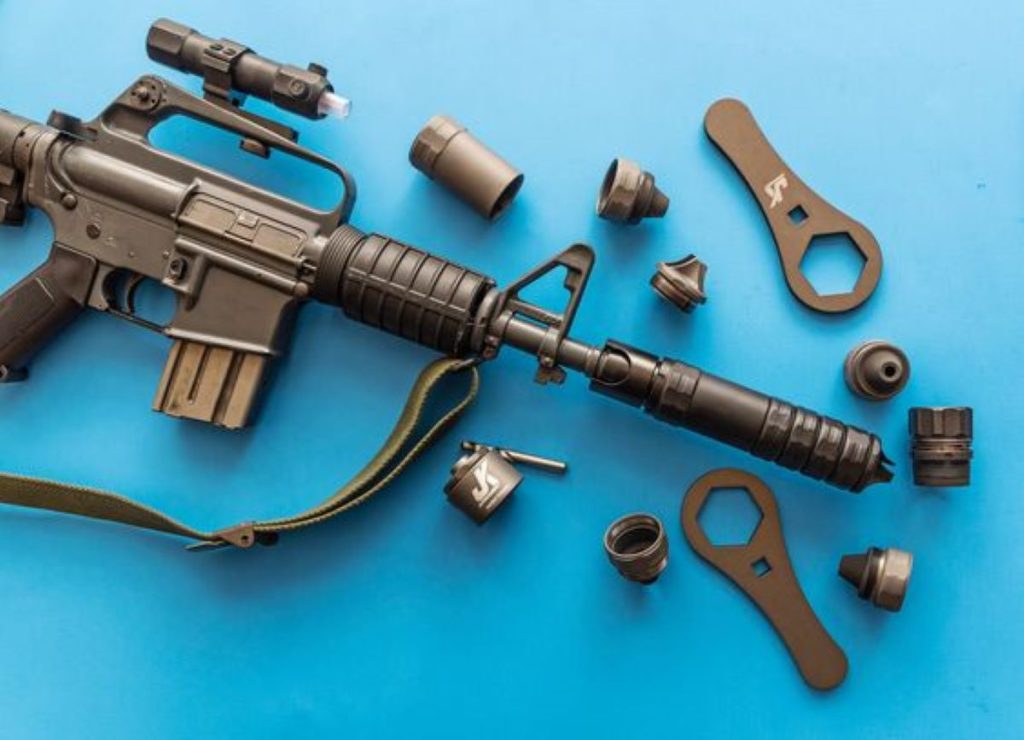
Towards the end of November, the ATF attempted to clarify any confusion about devices marketed as “solvent traps.” A whole lot of them are actually silencers and are under regulations from the National Firearm Act of 1934 – and banned in some states.
It is one of their more controversial decisions related to add-on devices for firearms. In 2017, a mass shooting happened at a Las Vegas country music festival. It caused the agency to put an embargo on bump stock devices.
For gun enthusiasts, the moves all mean one thing — they’re coming for the guns. The recent warning to all federal firearms licensees clarifies that the test of what’s legal isn’t a device name. Instead, it has to do with more of what it can do.
Solvent traps belong under the statutes that include “any device for silencing, muffling or diminishing the report of a portable firearm.” ATF spokeswoman Kristina Mastropasqua says solvent trap devices that function as silencers must be registered by the manufacturer or importer. Not the individual buyer.
ALSO READ: Massachusetts Files Civil Rights Lawsuit Against Neo-Nazi Group Causing Social Unrest
Recently, hobbyists have found loopholes around registering traditional silencer purchases under the National Firearm Act’s “Form 4.” They know they can avoid the long wait times by registering their homemade devices under a different process called “Form 1.”
Now, solvent traps no longer qualify for Form 1 registration. It is a move gun enthusiasts, attorneys advising them, and manufacturers find disturbing. Adam Kraut is the executive director of the Second Amendment Foundation.
He said: “ATF’s latest open letter highlights the issue with how Congress defined the term ‘silencer’ to include its parts, ATF’s interpretation of what constitutes a silencer, and an individual’s ability to manufacture or repair their own.
Individuals who wish to manufacture their silencers are placed in a precarious position of trying to source materials to do so while not running afoul of the law.” Kraut continued, “which requires a lengthy registration scheme and wait times that run many months before assembly can occur.
POLL — Do You Support Stricter Gun Control Laws and Assault Weapon Bans?
Nick Vitiello, a man who went viral for his altercation with cops over gun matters, says he received a Form 1 for manufacturing his silencer. He reportedly got fingerprinted, filled out paperwork, and paid a $200 tax, but the ATF now deems all of that illegal. Fortunately, the authorities did not charge him with any crime.
Vitiello believes the new open letter from ATF is “absurd.” He says solvent traps require substantial machining to become a functioning silencer. “The ATF is increasingly overstepping its congressionally approved authority and illegally creating laws while calling them ‘rules,'” Vitiello says.
The Trump administration and a GOP bill in Congress sought to legalize silencers nationwide but failed in 2017. An NRA-backed campaign sought to rebrand the devices “suppressors” because they reduce noise but are not silent.
In 2019, the U.S. Supreme Court dismissed an effort by two men convicted of purchasing unregistered silencers to loosen the device rules. Gun control activists worry silencers make gunshots harder to hear or see.
This affects the effectiveness of law enforcement and community gunshot detection systems like ShotSpotter. Homemade silencers can still be manufactured and registered. However, Dillon Harris, an attorney at the Civil Rights Defense firm, says it has to be under strict protocols.
Harris thinks the ATF letter is a welcome clarification but has arrived too late because new hobbyists will continue to encounter the solvent traps in online marketplaces.
You Might Also Like:
Former DEI Executive at Facebook Pleads Guilty In a $4 Million Fraud Lawsuit
The Vatican Says Catholics Can Now Cremate Their Dead
New Huntington Council Transforms City to Rights Battleground
Protesters in Sarasota Call for Resignation of GOP Board Member Over Sex Scandal
Are the Liberals Solutions Helping Black Students Perform Better?
